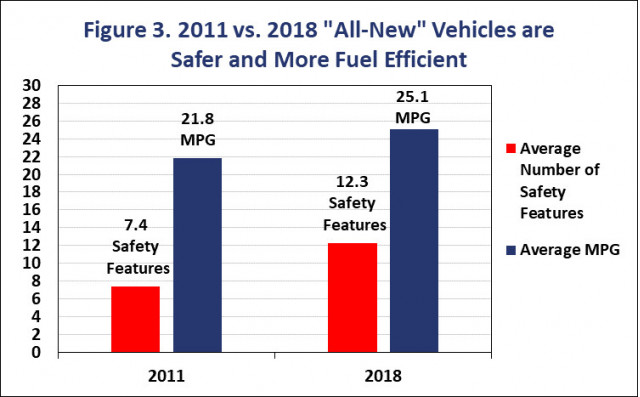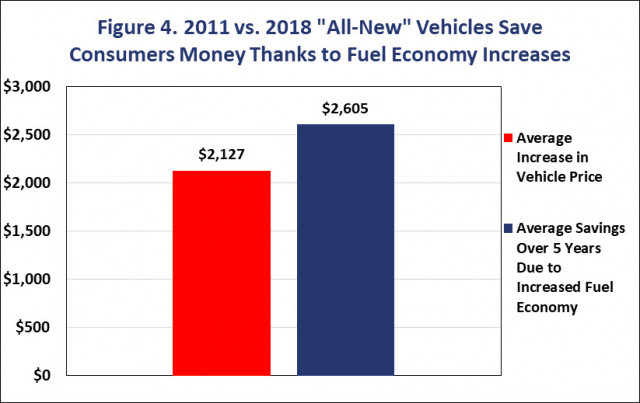CFA study shows better gas mileage standards offset cost of modern safety tech
Cars that get good gas mileage aren't unsafe. In fact, gas savings have more than paid for safety improvements in modern cars, as well as for the technology needed to make the gains in fuel economy.
That's the conclusion of a new report released Thursday by the Consumer Federation of America, in anticipation of a meeting between President Donald Trump and automakers to discuss fuel economy standards.
When Trump first took office, the automakers met with the Administration and sought relief from tightening federal fuel economy regulations that had been finalized in the last days of the Obama administration.
The Trump administration expressed sympathy and said that fuel economy regulations raised car prices, which could keep Americans from buying new cars with the latest safety technology.
It's worth stating that safety has historically been the leading argument of opponents since fuel-economy regulations began. It's the reason that the National Highway Traffic Safety Administration was put in charge of fuel economy regulations instead of the EPA in 1975. Back then, people argued that fuel economy regulations would push people into smaller cars, which could fare worse than larger cars in crashes.
That's about all there was to it back then. Now the question is significantly more complicated.
The price of cars has gone up as they've become more efficient. Since 2011, fuel economy has increased from an average of 21.8 mpg for all cars sold that year to 25.1 for all cars sold so far in 2018, according to the CFA study.
Prices have also increased by an average of $2,127 between 2011 and 2018, using constant dollars.
Jack Gillis the incoming executive director of the CFA says that in his study, the sticker price increase for every 1 mpg improvement is about $100. "One of the things we noticed on all-new vehicles is that the overarching cost increase has been more than offset by the fuel savings," he says.
As documented in the mid-term fuel economy review, the savings from that improved fuel economy is larger than the price increases of vehicles. That trend was predicted to carry forward. The average 2018 car is expected to save $2,605 in fuel costs over five years (the average ownership term of a new car) compared with an average 2011 model.
CFA tracked percentage of models available in each year that had any of 15 advanced safety features, including curtain air bags (which are still not universal), knee air bags, automatic emergency braking, active lane control, lane departure warning, blind-spot monitors, seat belt pretensioners, and electronic stability control with rollover assistance, among others.
In the overall fleet, the study found that the prevalence of cars that had at least one of these features rose form 19.5 percent of all 2013 models to 64 percent in 2018, even as cars got more fuel efficient on average. Rising fuel economy standards during those years had no negative impact on adoption of safety features.
The availability of each safety feature individually also increased since the fuel economy standards were implemented.
![EPA administrator Scott Pruitt [photo from 2014] EPA administrator Scott Pruitt [photo from 2014]](https://images.hgmsites.net/med/oklahoma-attorney-general-scott-pruitt-2014_100584650_m.jpg)


Email This Page